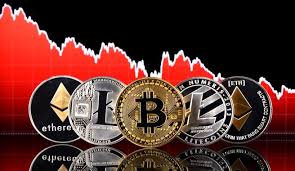
Understanding the Crypto Trading Asset List
The world of cryptocurrency is vast and ever-evolving, filled with numerous trading assets to explore. In this article, we provide an extensive Crypto Trading Asset List to help you navigate through various options available to traders. From Bitcoin to lesser-known altcoins, Crypto Trading Asset List click here to find out more about different assets and their trading potential. Understanding these diverse assets is crucial for anyone looking to invest wisely in the cryptocurrency market.
What is Cryptocurrency Trading?
Cryptocurrency trading involves the buying and selling of cryptocurrencies with the aim of making a profit. Traders can engage in spot trading, futures trading, or margin trading based on their strategy and risk appetite. Given the highly volatile nature of cryptocurrency prices, effective trading strategies are essential, and having a well-defined asset list can significantly enhance decision-making processes.
Major Types of Crypto Assets
In the crypto trading landscape, assets can be classified into several categories:
- Coins: These are the main currencies of the blockchain, such as Bitcoin (BTC), Ethereum (ETH), and Litecoin (LTC).
- Tokens: These are built on existing blockchains, often used for specific applications or platforms, like Chainlink (LINK) or Uniswap (UNI).
- Stablecoins: These are pegged to traditional currencies or assets for stability, such as Tether (USDT) and USD Coin (USDC).
- DeFi Tokens: Tokens specifically used for decentralized finance applications, such as Aave (AAVE) and Maker (MKR).
- NFTs: Non-fungible tokens represent ownership of unique items or assets, often used in art, gaming, and collectibles.
Key Cryptocurrency Assets to Watch
The following assets are crucial for traders looking to make informed decisions:
1. Bitcoin (BTC)
Launched in 2009, Bitcoin is the first and most recognized cryptocurrency. It’s often referred to as digital gold and serves as a fundamental asset in many trading portfolios.
2. Ethereum (ETH)
As the second-largest cryptocurrency by market cap, Ethereum is essential for its smart contract functionality, enabling decentralized applications.
3. Binance Coin (BNB)
Originally created as a utility token for the Binance exchange, BNB has grown to be a significant player in the cryptocurrency ecosystem.
4. Cardano (ADA)
Cardano aims to create a more secure and scalable blockchain platform and is known for its research-driven approach.
5. Solana (SOL)

With high throughput and lower transaction costs, Solana is making waves in the DeFi and NFT spaces.
Emerging Altcoins
Alongside established cryptocurrencies, emerging altcoins have been gaining traction:
1. Polkadot (DOT)
Polkadot offers interoperability between different blockchains and aims to facilitate a decentralized web.
2. Chainlink (LINK)
Chainlink is vital for enabling smart contracts to securely connect to outside data sources and APIs.
3. Avalanche (AVAX)
Avalanche offers high scalability and fast transaction speeds, vying to provide an alternative to Ethereum.
Stablecoins and Their Importance
Stablecoins play an essential role in the cryptocurrency ecosystem by providing stability amid market volatility:
1. Tether (USDT)
As the first stablecoin, Tether remains the most widely used stablecoin for trading and liquidity.
2. USD Coin (USDC)
USDC is increasingly popular due to its transparency and regulatory compliance, making it a trustworthy choice for traders.
Trading Strategies
When choosing from the Crypto Trading Asset List, it’s crucial to employ effective trading strategies:
- Day Trading: Involves buying and selling cryptocurrencies within the same trading day to capitalize on price movements.
- HODL: A long-term strategy where investors buy cryptocurrencies and hold on to them for an extended period.
- Swing Trading: Traders look to capture price swings by holding onto assets for several days or weeks.
- Scalping: A strategy focused on making small profits on numerous trades throughout the day.
The Future of Crypto Trading
The cryptocurrency market continues to evolve, with new technologies and assets being introduced regularly. As regulations become clearer and more institutional investors enter the space, the landscape of crypto trading is expected to shift significantly.
Conclusion
The Crypto Trading Asset List is essential for effectively navigating the complex landscape of cryptocurrency. By understanding various assets, their functions, and incorporating sound trading strategies, traders can position themselves for success in this exciting and volatile market. As always, staying informed and diligently researching assets before investing is vital to mitigate risks and maximize returns.
